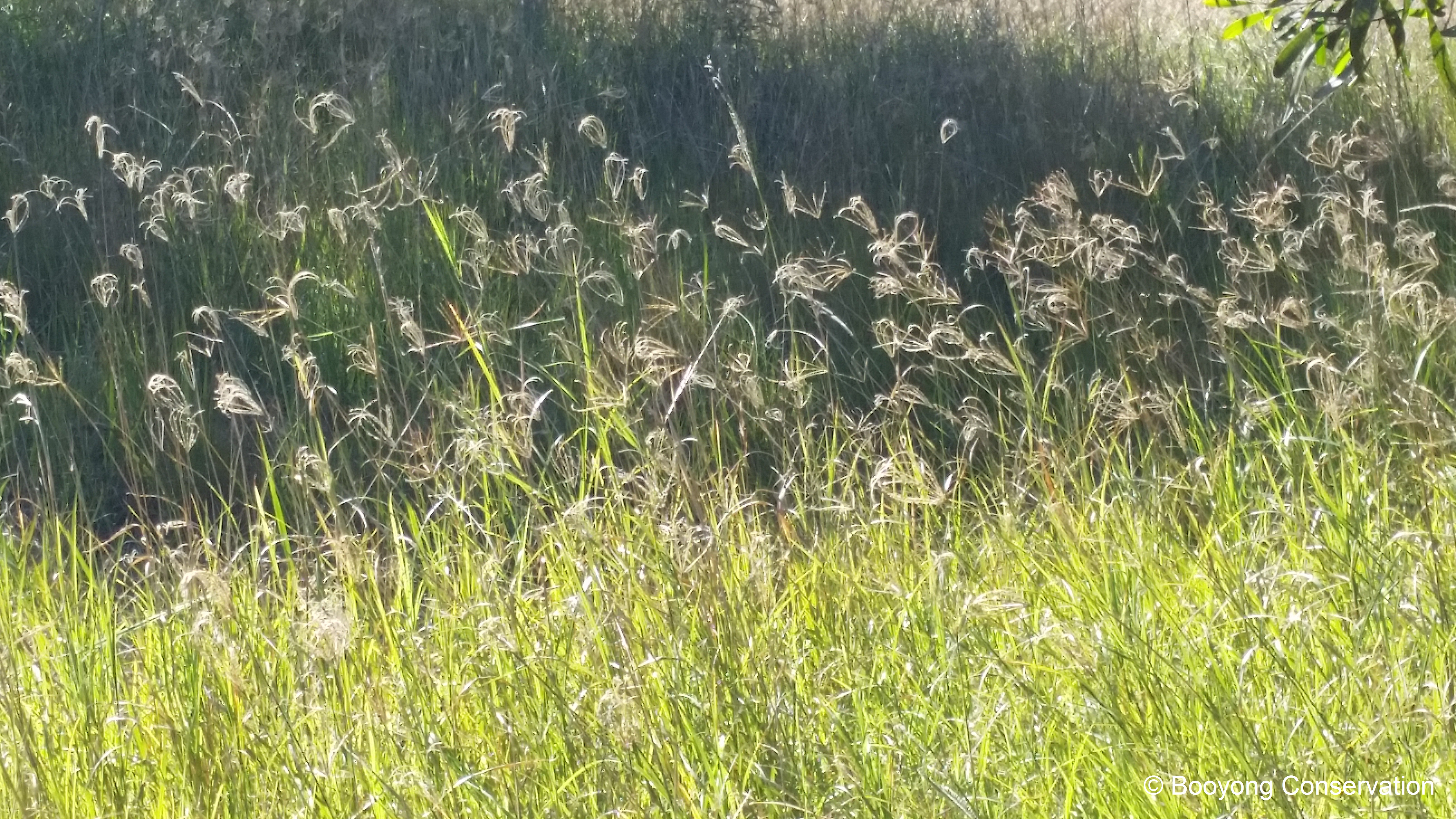We believe that the meadow was home to sheep many years ago, and when we arrived a neighbour’s horses were enjoying the Rhodes grass that grows there. This grass (Chloris gayana) is a useful pasture, drought resistant and very productive plant to feed animals. We can only assume it was originally planted for this purpose.
Interestingly we believe the previous owners of Booyong had attempted to reduce the meadow area and encourage the conservation area to re-establish itself there, but to no avail. According to the Department of Primary Industries, Rhodes grass has the capacity to smother native species and can be invasive. It is on the New South Wales North Coast environmental weed list and is regarded as an environmental weed. However, we have not seen any evidence of a threat at this stage, perhaps because the rainforest area is so well established. We will certainly watch this area closely.
Growing – Rhodes grass is a perennial or annual leafy grass that grows 1-2 m high with deep roots that go down to 4.5m. This grass grows well in temperate areas and can withstand long and dry periods, preferring full sun. It is also frost tolerant and grows in a variety of soil types.
As you can see from the photo, the seed head has an open shape, and one sided or double sided short equal sized stalks that emerge from a central stem.
Chloris gayana is useful as a cover crop and soil improver, as it improves fertility and soil structure, this is not surprising given its deep root structure. It also aids in reducing erosion, improving water infiltration and water holding capacity and reduces the soil temperature during the Summer months.
Our neighbour Rosemary, has recommended we sew this grass for mulch in the veggie garden beds. Apparently in Hawaii they use it as a seed bed for crops like zucchini, cabbage, onions and eggplants as it provides organic matter and protects the soil from the elements. Worth considering.

Harvest – As a young plant, this grass is a high-quality feed and is used for hay and grazing. Hay can be cut every month, that certainly explains how prolific it is. At Booyong we (and our friend Dave as pictured) slash it regularly and have tried burning it off as well, it always comes back quickly.
Propagation – Chloris gayana can be propagated from seeds in Spring and will provide full ground cover 3 months after sowing. It spreads by runners and can also be mixed with other grasses to improve yields.

You must be logged in to post a comment.